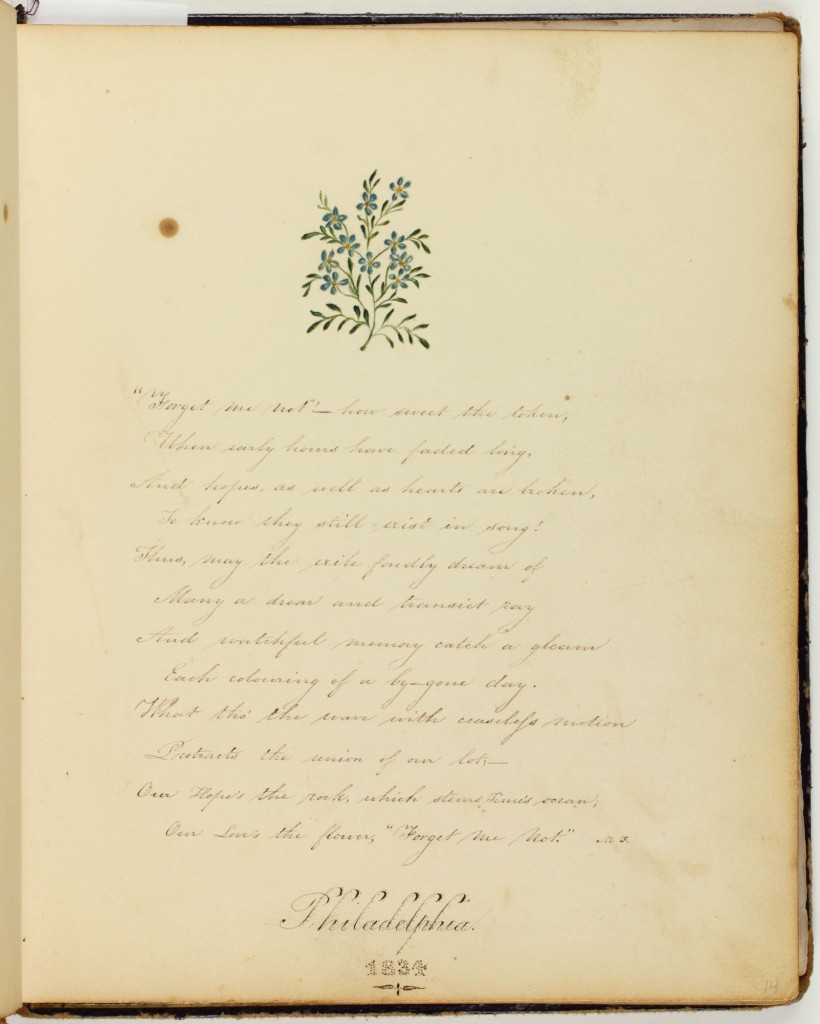Preface (3)
6|7|8|9|10|11-12|13|14|15|16|17|18|19|20|21|22|23|24|25|26|28|30|31|32|33
34|35|36|39|42|44|47|49|51|52|53|54|55|56|57|59|62| 63|64-68|70|73|75

Forget me not”!—how sweet the token,
When early hours have faded long,
And hopes as well as hearts are broken,
To know they still exist in song!
Thus, may the exile fondly dream of
Many a dear and transie[n]t ray
And watchful memory catch a gleam
Each colouring of a by-gone day.
What tho the wave with ceaseless motion
Protracts the union of o’er lot:—
Our Hope’s the rock, which stems Time’s ocean,
Our Love’s the flower, “Forget Me Not.” M F.
Philadelphia
1834
Signed “M. F.,” this poem “Forget Me Not” is likely transcribed by Margaretta Forten who made other contributions to the Cassey Album. Forten may have also created the accompanying watercolor of the flower after which the poem by Southern poet William Gilmore Simms (1806-1870) is titled. Ironically, Simms was an outspoken advocate of slavery.
The poem attests that love between two people can persist across time and distance, suggesting that Forten was going to be absent from Cassey’s life for a while and wanted her memory to remain with her. The forget-me-not thus comes to emblematize the poem’s “sweet…token” of remembrance as well.
Page 14: Selected pieces from William G. Simms Jr., “The ‘Forget Me Not,’” in Early Lays (Charleston, South Carolina: A. E. Miller, 1827).
